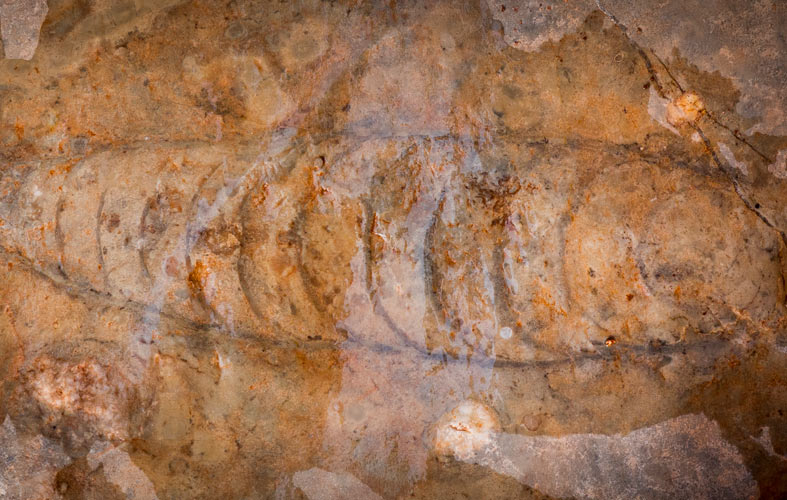Tonight, it’s ecology graduate student Evan Wolf’s turn.
In this sea of geologists, while everyone is looking at rocks, he’s usually bent over a plant or spotting wildlife. While I saw only a few birds and lizards, leave it to Evan to find bighorn sheep scat, the skeleton of a ring-tailed cat and beaver tracks. Oh, and the beaver tracks? He found those after he noticed where a beaver had been chewing on a tamarisk plant.
Tamarisk takes center stage for his talk. The plant is a well-known, nonnative invasive in the desert Southwest. It’s been in the Grand Canyon since 1938. The science on it is a bit divided. It’s detested by many as a water-sucking, light-hoarding, nutrient-stealing menace. But Evan, a wetlands ecologist, makes us consider its place. He begins with a song:
“I know an old lady who swallowed a fly. I don’t know why she swallowed a fly. Perhaps she’ll die…”
If you know the song, then you know the old lady then swallows a spider to catch the fly. And down the inane food chain the song goes.
All of this is a setup to talk about tamarisk and the tamarisk beetle, another nonnative species that has made its way into the canyon after being introduced in neighboring states to eat tamarisk.
We walk as a group to look at some tamarisk beside the river. Evan points out how native species, like that beaver and some insects, are using the tamarisk.
Does it make sense to introduce one nonnative to wipe out another when there isn’t solid scientific data that tamarisk is displacing native species in the Grand Canyon? Perhaps a better management tactic, Evan explains, is to proactively establish native plants in areas affected by tamarisk rather than reactively try to destroy them. After all, the conditions for some of those native species to survive are now gone.
“Restore the process, not the outcome,” Sarah says in summary.
The Grand Canyon around us serves as a constant reminder of a world in flux, where a desert was once the sea, and lizards crawl over the fossils of giant sea snails. What can and cannot live here is ever changing.
“Dinner!”
- Kat Kerlin
Trevor Waldien checks out a 400-million-year-old ocean deposit of chert and limestone in the Grand Canyon. Credit: Joe Proudman / UC Davis








